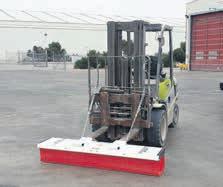
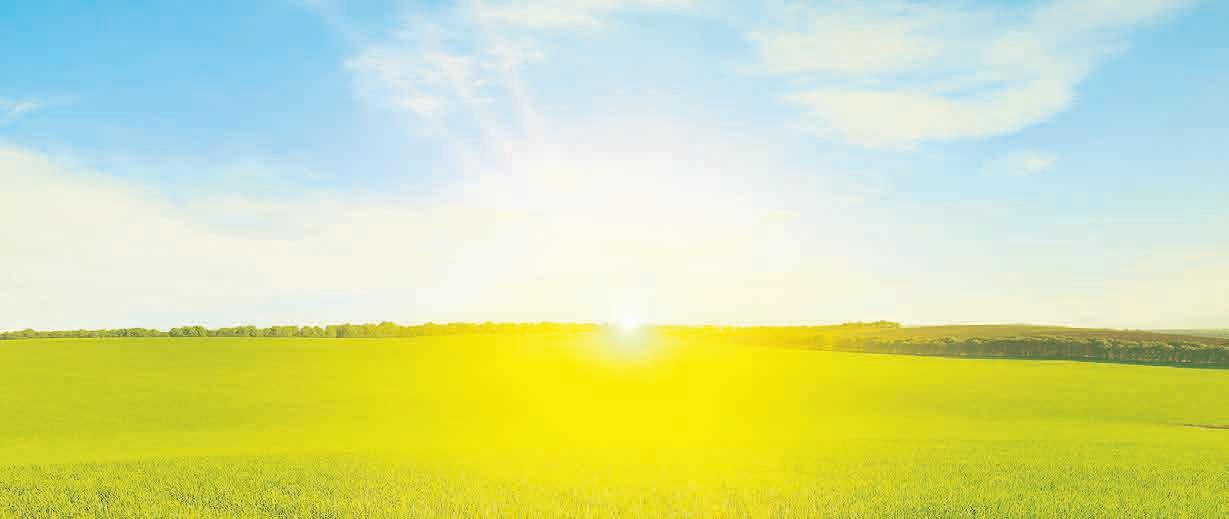
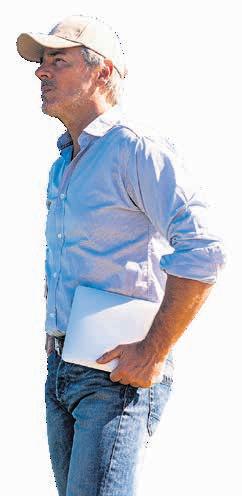
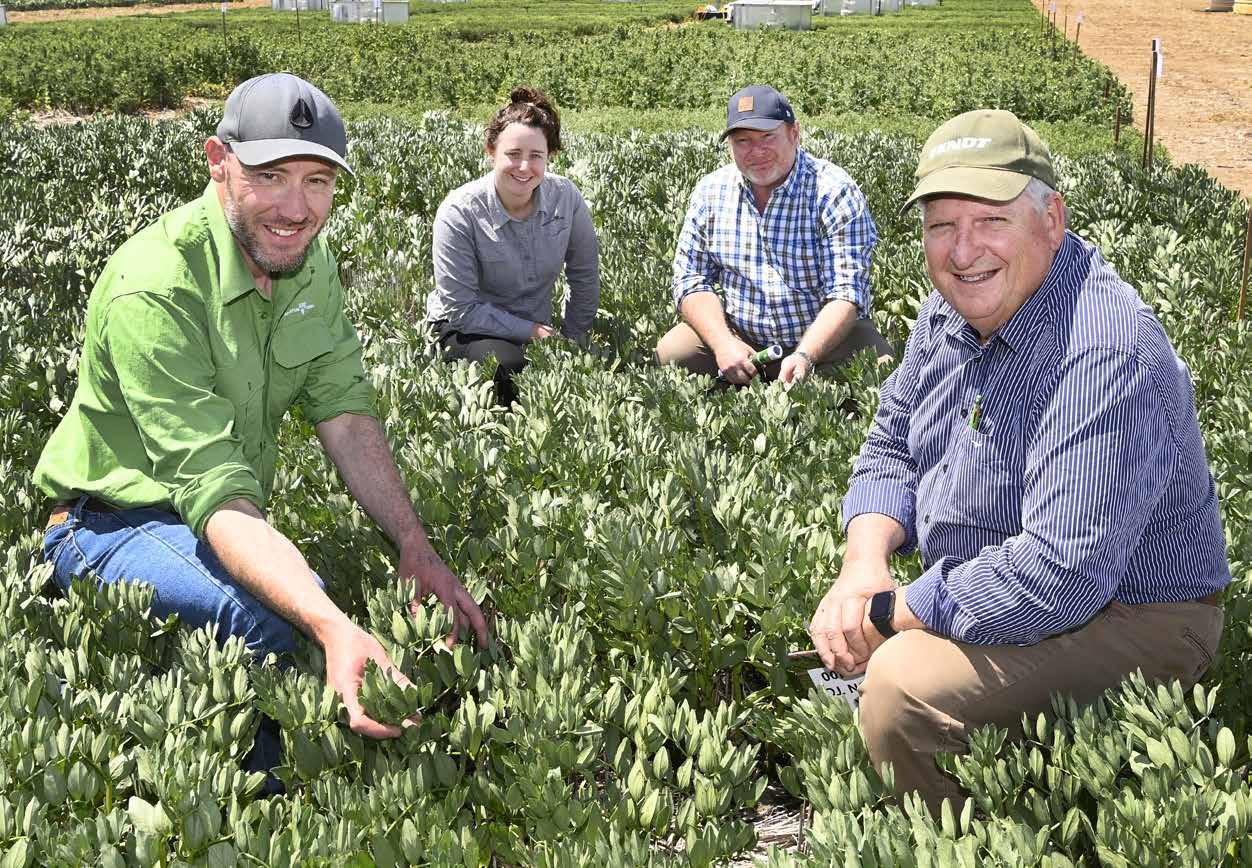




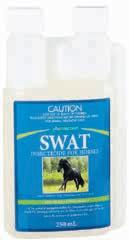





































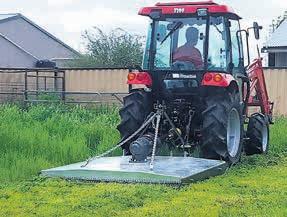




















































































After a ‘rollercoaster’ season that did not seem to break, farmers across the region welcomed last week’s rain to finish off the crops that had not yet been cut for hay.
Wonwondah wheat and canola farmer Russell Heard said it was his most challenging season to date, with crops emerging late and then being sandblasted.
“It’s been a bit of a roller coaster this year – it was 10 weeks in the ground before crops properly emerged,” he said.
“2025 has been pretty much the same as 2024 on a start basis, and this year we’ve also had sandblasting in emerging crops, so that’s been particularly challenging.”
Mr Heard said he had never experienced sandblasting before.
“Obviously farming has its ups and downs on rainfall and dry times, we
understand that, but the sandblasting early in the year, in the autumn, was something that we’ve never really seen before to this level,” he said.
“For guys who sowed between Easter and Anzac Day, and had disc seeding machines and managed to get an emergence on a very small amount of rain, crops came up and went well.
“Then we had that long dry period, and basically the frost and the warm weather pretty much killed them.
“Then the next time round after repeat sowing, crops got up and then we started to see these bad wind events and sandblasting effect, particularly in canola, which pretty much kills the crop.”
Mr Heard said the change of seeding systems might have assisted the wind damage.
“Because the surfaces have been flat and fine, the wind has raced along and made the topsoil move, and created this little sandblasting event,” he said.
“But fortunately myself, because we still run a tine system which leaves the ground in a rough, cloddy type formation and a wide row spacing, we only had about 65 hectares to re-sow, but there were a lot of people that had to re-sow significant areas, hundreds and hundreds of hectares, multiple times to get through to a proper winter weather event when these winds disappeared.”
Mr Heard said rain on Wednesday last week was unexpected, but welcome.
“We had 15 millimetres – we didn’t really believe it was going to happen,” he said.
“If we hadn’t have had that rain, the cropping season would be starting.
“The 15 mils is what we describe as a money-making rain for everyone. If we hadn’t have had that, it would have been a road of a little bit of deterioration of the crops.”
Horsham-based Spark Agricultural
and Associates’ Matthew Sparke said on Wednesday last week growers had reported about 12 to 18 millimetres of rain across Horsham and surrounding districts.
“It seemed fairly constant across our part of western Victoria through Horsham, Warracknabeal, out to central Victoria, so really good rain,” he said.
“We’ve been sitting on the knife’s edge for a while – those warm days didn’t help.
“We’ve seen a bit of crop cut for hay, which is on the ground and unfortunately, this rain won’t help that. But I think for crops that are still there, the rain is going to fill most of them.
“Some late wheat might struggle, but it’s certainly going to help.
“I think barley will get home on this rain, lentils will get home on this rain, and canola will get home on this rain, but wheat might like another rain.
“These cool days have really helped us get to where we are now, and with
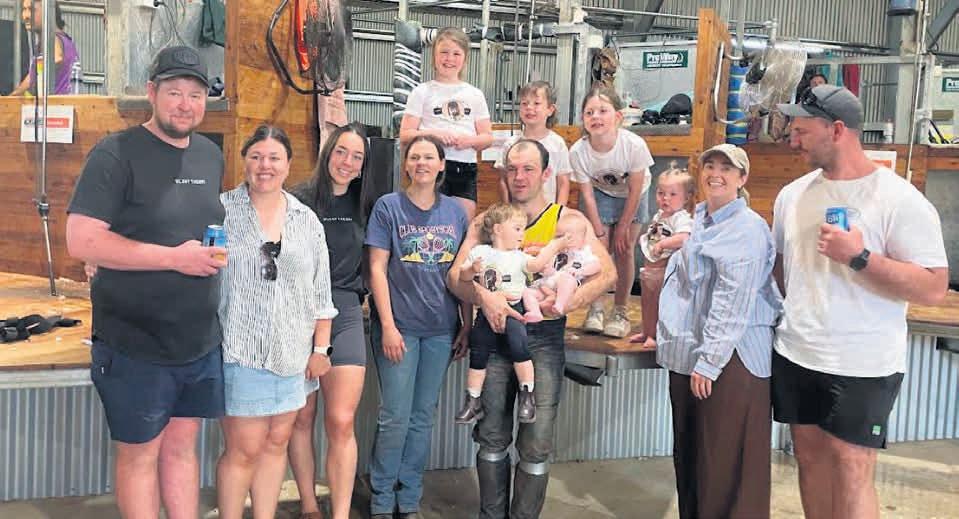


a 15-mil average rainfall, I think we’re very close to getting home.”
Mr Sparke said some warmer days – of temperatures of high-20s and low-30s – had ‘sucked some life out of the crops’.
“It is very noticeable, as you drive around, some are starting to yellow, but some of them are very close to full grain fill as well,” he said.
“We’ve seen some wheat tips around the place and oats have certainly burned off. They’re usually the first to go, but generally it’s not too bad.
“There is a little bit of frost damage about in some lentils and wheat, but generally I think it may not look fantastic, but it’s going to be okay.
“There was no moisture in the profile to start with, and we’ve been living from rain to rain, and we’ve just got through by the skin of our teeth.”
• Rain totals between 15 and 36 millimetres were recorded across the region at the weekend.
Australian grain growers are being urged to apply a different lens and enter the 2025 GrainGrowers Photo Competition.
The annual competition captures the spirit of the industry, its people, places, and moments that make it unique.
Four cash prizes are available for aspiring photographers: $1000 for first place, $500 for second, $250 for third, and $250 for people’s choice.
The top 12 selected images will be featured in the 2026 GrainGrowers calendar. Winning entries will also receive industry-wide exposure through GrainGrowers’ publications and social media channels.
GrainGrowers chief executive Shona Gawel said the competition was a fantastic opportunity for growers to share their stories visually.
“What we are looking for are images that showcase the real stories of Australian grain growers,” she said.
Ms Gawel encouraged growers to get inspired, get involved and enter their images at graingrowers.com.au/ calendar-competition.
Growers are invited to vote for their favourite snaps on the website. Entries close on November 7.

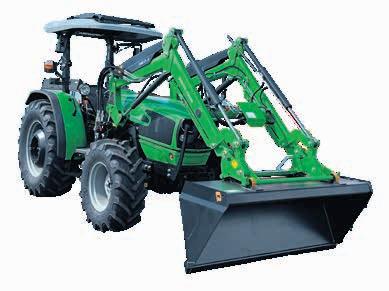







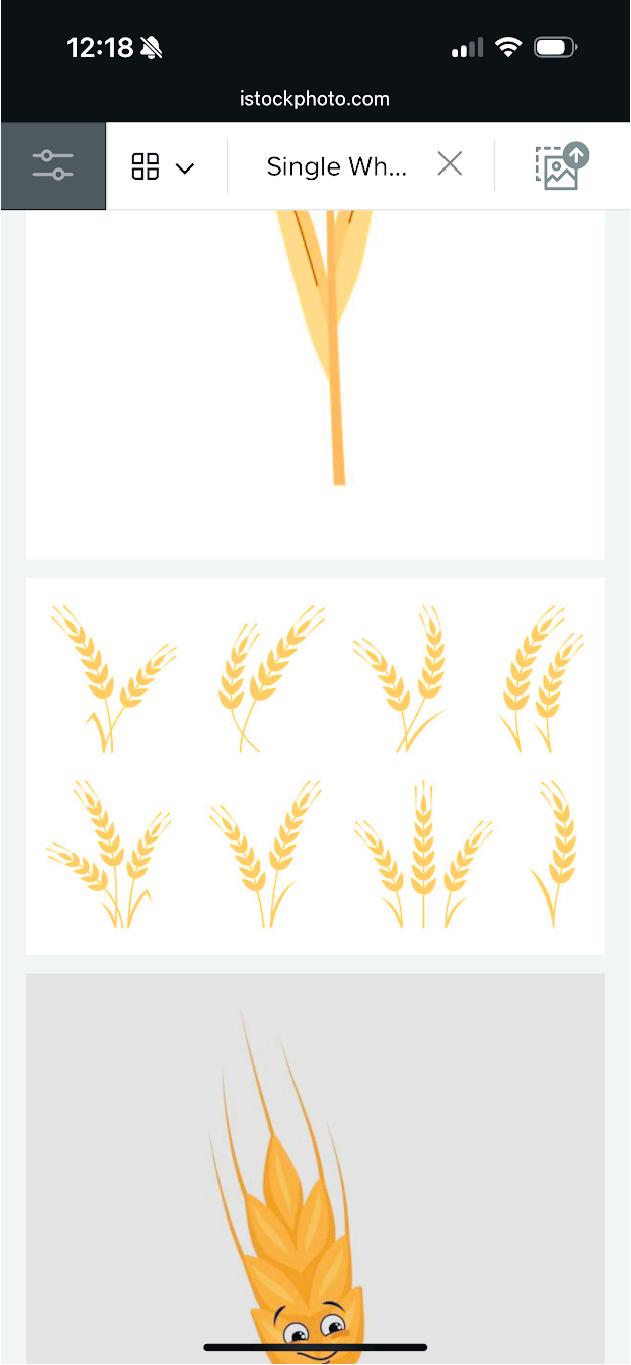



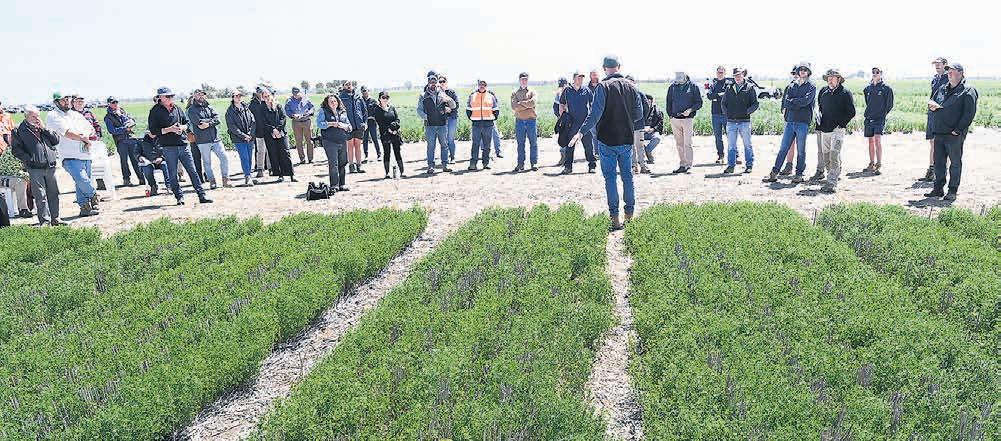
BY BRONWYN HASTINGS
An Agriculture Victoria pulse field day near Horsham last week gave industry insight into the local growing and global selling and demand for pulses, from a range of guest speakers.
Agriculture Victoria senior research scientist in agronomy Ash Wallace said the pulse field day was also an opportunity for farmers to network.
“We talked about all different aspects of pulses – lentils, faba beans, chickpeas, field peas and vetch,” he said.
“There was discussion about how to optimise the production, what new varieties are coming through, and how they might help people deal with challenges that they have.”
The annual event, this year at the six-hectare trial site at Kewell, drew a pleasing crowd despite Wednesday’s weather conditions forcing its postponement by a day.
Australia Pulse Council chair and farmer Peter Wilson said global engagement was key to navigating times when international tariffs fluctuated prohibitively.
“I’ve had the privilege of travelling around the world to continue to engage with people on a practical, really positive theme,” he said.
“We had constant engagement with
the Indians during the period of a 60 per cent tariff being applied to desi chickpeas – our Australian chickpea crop basically went down to almost a maintenance-type model to just satisfy Pakistan, the UAE and Bangladesh, because India was out.
“But instead of kicking the stumps over and throwing the toys out of the cot, we maintained really constructive engagement in government and then with the help of Grains Australia, when we got a sense that things were changing a bit, that relationship was already there, it wasn’t a matter of walking in and saying ‘hey we’re Grains Australia and we’re here to help’.
“We talked in terms of partnerships with the Indian government and made it fairly easy to transition from a closed market back to an open market very swiftly, to in excess of two-million tonnes of desi chickpeas last year.”
Mr Wilson said the markets were fully flush and Australian farmers might store more product this year than they did last year as a result, but they would continue to be ‘highly adaptable’.
“They’re very agile in terms of moving – we saw the Queensland and northern New South Wales farmers migrating to other crops, growing bigger faba bean crops and shrinking their desi chickpea crops down,” he said.
“They were very, very quick to get
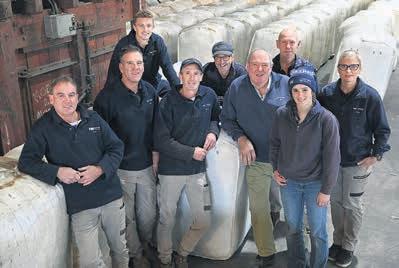
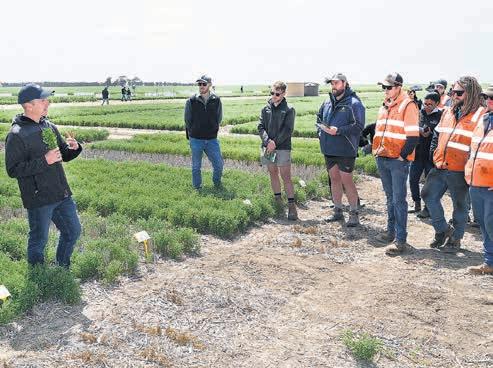
FIRST-HAND: Research agronomist Jason Brand addresses a group during the Wimmera pulse field day. Pictures: PAUL CARRACHER
down to make those decisions so that they weren’t looking at absolute crap prices.
“Then they ramped up really, really quickly, went from sort of 800,000 tons of production to 2.3-million in a heartbeat.
“Tariffs are horrible, because, and we’re just in that cycle where people just make a decision on a whim, and our goal is to stay engaged so they don’t just do things on a whim.”
Mr Wilson said Australian farmers had the reputation for producing highquality crops.
“And the end market, if you go into the wet market in South Asia, the buyers all want to put their hand into a bin just as you guys do at harvest time,” he said.
“They want to smell it, they want to look at it, they want it to be good – and Australian farmers do that exceptionally well.”
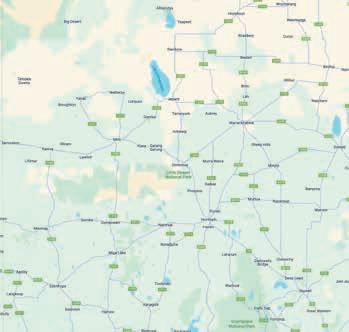

Sheep producers should plan ahead to implement flystrike prevention and control programs as the weather warms.
Agriculture Victoria livestock extension officer Brittany Price said controls included shearing or crutching, breech modification, selective breeding, dag management, preventative chemical treatment, and free website FlyBoss.
“The FlyBoss website allows producers to compare their current management system with an alternative system taking into account their location,” she said.
“This can help inform decisionmaking in relation to the dates of shearing and crutching, and preventative treatment application.
“During high-risk periods producers must inspect their stock regularly to identify and treat any fly struck sheep.”
Ms Price said flystrike in sheep could show up as restlessness, loss of appetite, a strong smell, and visible maggots in the wool.
Flystruck sheep can be treated by shearing struck wool and a five-centimetre barrier of clean wool around the strike close to the skin to remove maggots; collecting the maggot-infested wool into a plastic bag and leaving the bag in the sun for a couple of days to kill the maggots; applying a registered flystrike dressing to the shorn area to prevent re-strike; removing struck sheep from the mob and placing them in an isolation paddock to monitor; and culling struck sheep from breeding programs.
“If treatment is not a viable option, humane euthanasia must be carried out,” Ms Price said.
“As with all veterinary treatments, it is essential to observe the withholding period and keep accurate records of any treatments administered.”
People wanting further information on the management and treatment of flystrike can visit www. flyboss.com.au, or for information about available drought support, visit www.agriculture.vic.gov.au/ drought or call 136 186.
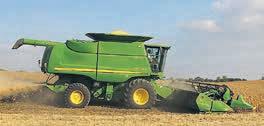
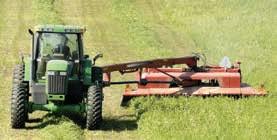
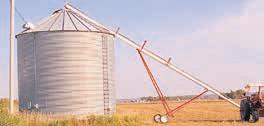










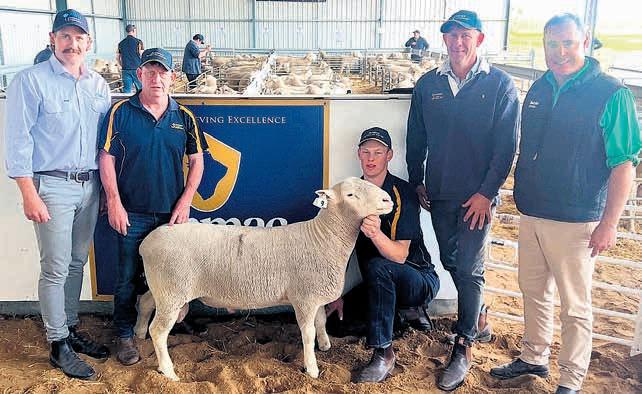



BY BRONWYN HASTINGS
Ram sale bidders are paying top-dollar at auction at a time when lamb and mutton are fetching record amounts, resetting producers’ on-farm highest prices.
Janmac co-principal Grant Hausler said a record number of registered bidders was an apt reward for the team at Goroke’s stud, after facing consecutive tough seasons.
“Our area is now having a good season, lamb and mutton are at record prices and wool at good levels – I’m not sure I have ever seen those three things combined,” he said.
There were 50 registered buyers at Janmac this year, and they bid strongly on the catalogue of 181 rams, ensuring a total clearance to a top price of $7000.
The 144 Poll Dorsets averaged $1806, while 36 White Suffolks sold for an average of $1269.
“Buyers now seem to be focusing on muscular carcasses and we are known for that style of sheep, so it is our style of fast-growing ram that people are chasing,” Mr Hausler said.
The Poll Dorset average was an increase of more than $250 on the previous sale, with eight more rams sold.
AWN Wimmera’s Dustin Cross said considering the way the season had been during the past 12 months, the rams presented in amazing condition.
“They were some of the best groups the boys have put forward and it showed in the spirited bidding,” he said.
“The top-end of the flock rams were $2300 to $2000, which proves the quality of them and that those growers coming and getting top end rams from Janmac each year are getting the results.”
Detpa Grove at Jeparit continued to cement itself as a leading White Suffolk stud in the country when it set an on-property ram price record of $60,000.
But the real proof in the Pipkorn family’s program was that a total of 30 stud rams sold to buyers in five states and averaged $9700, with 11 of the lots selling for $10,000 or more.
It was an increase from last year’s offering, where 20 rams sold to stud duties for an average of $4825.
Principal David Pipkorn said there were a lot of high-profile studs from across the country in attendance at their annual on-property sale this year.
“They were appreciating the highperformance genetics while built into the sound structure and good breed type of our sheep,” he said.
The attributes culminated in Lot 70, Detpa Grove 240715, the $60,000 sale-topping sire.
By Ashmore 221308, the ram was a July 2024 drop-out of an ET ewe
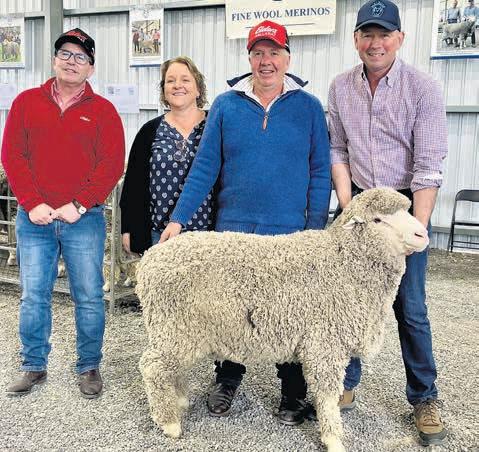
lamb. It had an Australian Sheep Breeding Value Terminal Carcase Production Index of 181, putting it at number eight in the country across all terminal breeds.
The ram is in the top five per cent for post-weaning weight, carcase weight, lean meat yield, shearforce and postweaning eye muscle depth ASBVs.
“The ram was structurally very correct and had tremendous breed type, on a moderate frame,” Mr Pipkorn said.
“We flush our most advanced ewe lambs each year, and this ram came out of that program.
“It is also a three-quarter brother to our keeper ram this year, Detpa Grove ‘LEGEND’ 240725.
“We were well supported by local agents, and a spread of buyers through Victoria and into South Australia, with the passed-in rams reflective of the tough season and people offloading ewes.
“The lamb industry has held up really well and strong prices have given people confidence to continue and rewarded those that bit the bullet and fed when they needed to.”
At the Melrose on-property ram sale at Nurrabiel, a strong crowd and spirited bidding saw 48 rams sold, with a top price of $4000 and an overall sale average of $1837.
All eight horned rams offered were sold, reaching a top of $3000 and averaging $2125.
Of the 40 poll rams offered, 36 found new homes, with a top price of $4000 and an average of $1771.
The top-priced ram lot 36, 24RP8473 16.2 mic 2.3 sd 14.4 cv 99.5 cf was knocked down to A and K McErvale, Langi Kal Kal, who secured six rams in total. Brimgower Farms, Brimpaen, was the volume buyer of the day, taking home eight rams for an average of $1593.
New South Wales’ Waverley Downs merino stud purchased two rams. One poll lot 20, 24GCG771, 16 mic 2.2 sd 13.9 cv 99.7 cf for $3000 and one horn lot 11, 244O4116 16.8 mic 2.4 sd 14.3 cv 99.7 cf for $2000.





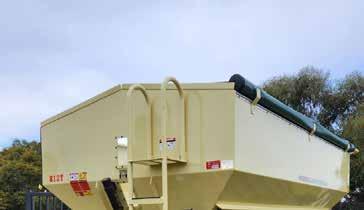
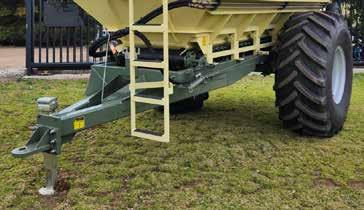
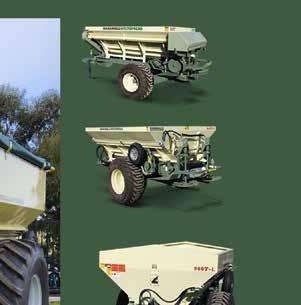
The versatile range of trailing spreaders for all types of granular fertilizers and seeds as well as heavy rates of gypsum, lime, compost and manures.
2.5 Tonne to 16 Tonne models available including narrow-track orchard model with side spread option


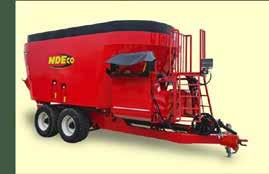
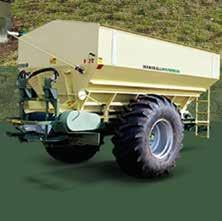


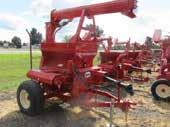

Available with i4M Variable Rate Controller, Weighing Systems, 3 Metre Axle & wheel options
- Spare Parts and Workshop Service and Repairs available -

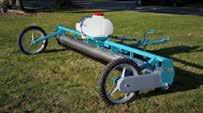

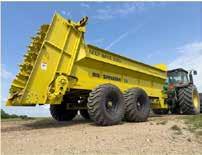


After an extremely tough period for livestock producers, what started as green shoots earlier in the year has in recent months gone berserk across all sectors inclusive of lamb, mutton and wool.
With every meteoric rise in any market usually resulting in some fluctuations at the top while it finds its new level, the latest weekly numbers suggest the handbrake is attempting to be pulled by buyers and we might be hitting the limiter of what can be achieved just for the moment.
There is no doubt anxiety is high from growers waiting for stock to bloom after a tough start so they can actually participate in the current market and claw back some lost ground from the past 18 months to two years.
Most farmers and agents will be going around their stock and putting a value on them, almost on a daily basis, looking to subscribe to the theory that if they deem their stock too dear to own then they should be getting something onto the market.
This is a great theory when fully stocked, however given what most are coming out of and the level of destocking that has occurred, the store market is also being keenly supported – particularly young ewes – in an attempt to utilise feed that is

finally coming, and coming fast, as well as creating a base for seasons to come.
As it stands, choosing the right article to push forward with in an elevated market is perhaps the most challenging part of the process.
Those with a trading mindset and seemingly thwarted by the current price of entry, will be looking for and waiting for a level of volatility as their cue to pounce.
Our team of AWN agents can assist if looking to get involved in this space.
The uptick in markets has also come just in the nick of time for ram sale season, which has been well supported and has achieved acceptable clearance rates.
What happens from here will largely be weather dependent with recent October rains welcomed in grazing areas and where crops are still hanging on, with more rain forecasted for the end of the month.
The modern weather forecast of course cannot be trusted any further than it can be punted, however, a little more spring rain should prevent a major influx of stock onto the mar
ket and assist in keeping markets buoyant throughout the entirety of spring.
Hopefully the market remembers from here on that we are dealing with livestock and not Bitcoin.
Unfortunately, and disappointingly so, for many in our northern areas rain from here on is probably still welcomed to a certain extent, but of little use with many cereal crops being felled for hay.
Here is hoping that any falls in these areas do not cause major downgrades of product, which would rub salt into the wound on top of a decision that no doubt was very tough to make.
An exciting month is coming up for AWN Wimmera with the highlight to be the annual First X Ewe Feature Sale at Edenhope Saleyards on Thursday, November 13, followed by the wether and crossbred store lamb sale one week later.
The current draw for the ewe sale sits at about 6500 ewes and 3000 ewe lambs.
Quality is shaping up to be excellent and the sale is likely to be keenly supported with an air of positivity and confidence slowly returning to the livestock industry.
Bitcoin as a form of payment – not available.


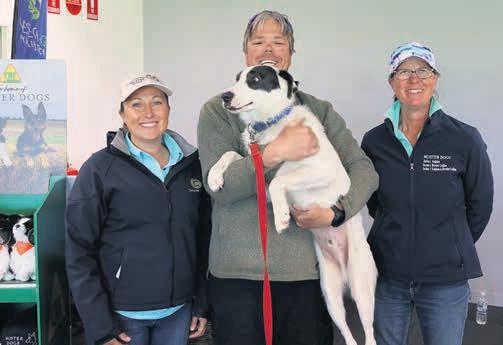
A Muster Dogs television series showcase attracted than 200 people to Kaniva during a Victorian Seniors Festival event, which featured Kaniva’s Kim Dodson, Edenhope’s Rob Tuncks and Keith’s Helen McDonald.
The trainers shared stories about how the program began, their time filming, and their experiences working with their dogs.
They also gave working-dog demonstrations, moving cows, goats and sheep.
West Wimmera Shire chief executive David Bezuidenhout said it was an allages event that brought the community together.
“Bringing the Muster Dogs team to West Wimmera was an exciting drawcard,” he said.
“It was wonderful to see such a strong turnout, with visitors travelling from across the Wimmera, South Australia, and even from Melbourne to be part of the day.
“It really shows how much people connect with the Muster Dogs story.”
Seniors’ Festival celebrations will wrap up at Apsley Hall tomorrow, October 30 with a light lunch and a performance by country music singer Kevin Sporer, who brings more than four decades of experience and an induction into the Country Music Hall of Fame.






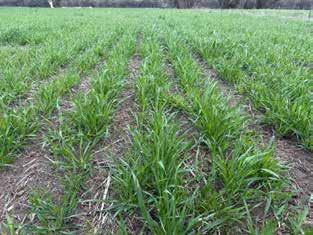




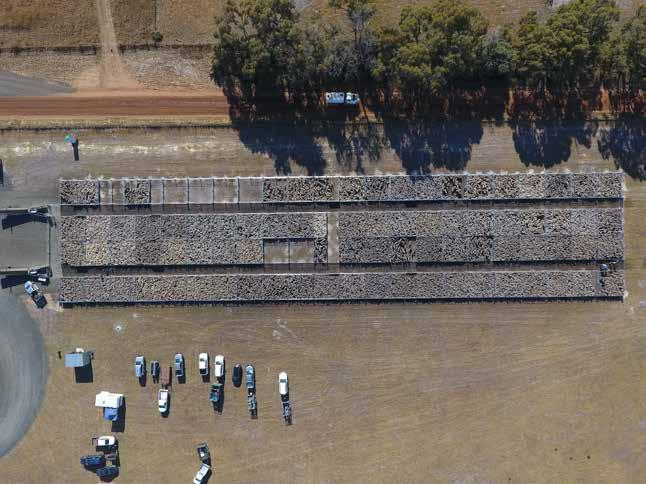
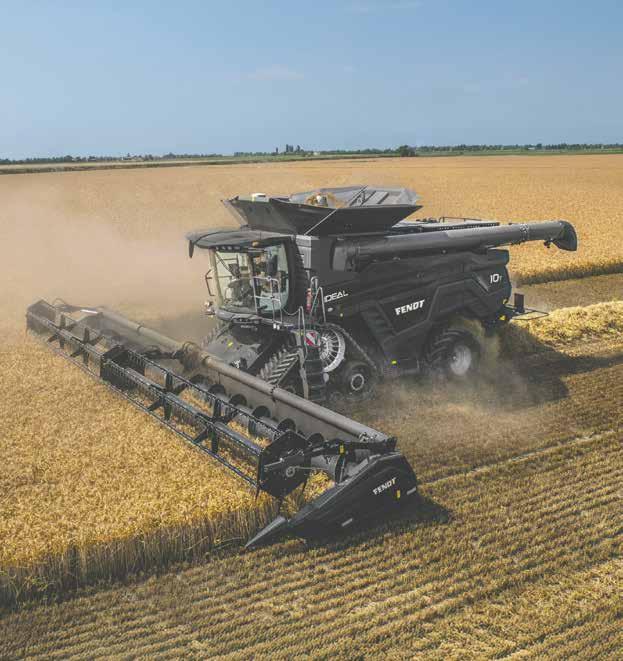





















Some of Australia’s brightest agricultural scientists were in northwest Victoria earlier this month as BCG and CSIRO joined forces to explore how research and practical farming can come together to address the industry’s most pressing challenges.
Topics such as climate resilience, input management, weeds, pests and disease were on the agenda as researches, BCG staff and nine farmers worked side-by-side for three days to discuss the emerging science shaping the future of farming.
The visit placed a strong spotlight on early career researchers, data driven decision tools and the role of local knowledge in driving innovation.
The visitors were also hosted by seven farming families, with the exchange of local perspectives proving a highlight for participants.
BCG chief executive Fiona Best said the gathering marked a significant step toward aligning science and on-farm adoption.
“There’s incredible value in having researchers and farmers in the same room talking openly about challenges and opportunities,” she said.
“This week has set the stage for a new phase of collaboration.
“We’re proud to see Birchip and the broader north-west recognised as a hub where science, data and local knowledge meet to drive the future of Australian agriculture.”
The discussions focused on nitrogen-use efficiency, disease, pest and

weed management, and the role of artificial intelligence.
Themes explored included limited chemical future, the next generation of Yield Prophet, and new biostimulant and microbial cycling research led by teams across both organisations.
CSIRO Farming Systems Program research director Ben Trevaskis said the partnership reflected a shared vision to position the right people to solve both current and future challenges.
“We want to place the right people to solve here and now problems, but also those of the future,” he said.
“Partnerships like this ensure research remains grounded in real world farming systems.”
One of the key ideas to emerge from the visit was the potential for CSIRO staff to be based in Birchip, working alongside BCG to embed science within the region’s farming systems.
The initiative would strengthen on-ground collaboration, provide local research experience for early career scientists, and enhance the translation of research into practice.
“Having a strong relationship with CSIRO is really important for BCG,” Ms Best said.
“It ensures farmer priorities are represented and that research translates into real impact for the region.”
BCG and CSIRO are committed to ensuring the ideas are implemented via a long term coordination framework to map future joint activities, expand researcher exchanges, and integrate science communication, including CSIRO’s upcoming contributions to BCG’s annual Research Compendium.
“Across the three days, we saw ideas emerge that could genuinely shape the next generation of farm management tools, crop inputs and data driven solutions,” Ms Best said.



Farmers purchasing more fodder than usual are more likely to introduce weeds to their properties, but there are precautions that can be taken to minimise the risk of unwanted weeds and pests.
Dairy extension officer Richard Smith said a designated feeding area, such as a feedpad, sacrifice paddock or containment area, could mitigate risks.
“Feeding out in restricted areas allows for better observation of any new plants germinating and enables quick eradication and control of any weeds or pests that might emerge, therefore reducing the risk of these becoming established in the area,” he said.
“Ongoing drought conditions are creating significant challenges for Victoria’s livestock industry, particularly a critical shortage of fodder, with farmers needing to look interstate to source supply.”
Mr Smith said Agriculture Victoria provided a free and tailored service to suppliers, transporters and farmers to help them efficiently navigate the permit requirements to bring feed into Victoria while managing biosecurity risks.
“When purchasing feed, farmers are encouraged to request a Commodity Vendor Declaration with every load,” he said.
“Commodity Vendor Declarations contain background information about the fodder source, including whether it has been sprayed or treated with chemical that is still within a withholding period, export slaughter interval or export animal feed interval.”
Permit applications for fodder are being prioritised by Agriculture Victoria to allow for timely fodder movement.
“To ensure that fodder movement occurs, once a Plant Biosecurity Permit is applied for, Agriculture Victoria will contact the farmer within two working days to discuss and assess the specifics of their import request,” Mr Smith said.
“A plant biosecurity permit will be issued free-of-charge for fodder movement. If an inspection of fodder by Agriculture Victoria is required on its arrival to Victoria, which will be stipulated as a permit condition, the cost of this inspection will also be waived.”
People wanting more information, can visit agriculture.vic.gov.au/farm-management/ drought-support/moving-hay-and-fodderacross-states.
“This information is critical for quality assurance programs, along with documentation of additional information such as the location where the fodder has been sourced from, the producer, date purchased, the transporter and where the fodder has been fed on farm,” Mr Smith said.


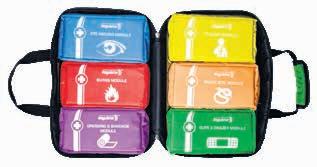









farmer Hamish McIntyre has replaced Murra Warra farmer David Jochinke as president of the National Farmers’ Federation.
Elected by NFF members as the organisation’s 15th president, Mr McIntyre has been a NFF director since October, 2023.
His involvement in agriculture includes serving as Cotton Australia chair and as a director on the Australian Wagyu Association and Agsafe boards.
Mr McIntyre runs a family owned, irrigated and dryland farming, cattle breeding, beef feedlot and broiler chicken meat business in the St George, Dirranbandi, Quilpie and Beaudesert districts in Queensland.
“I am honoured to be elected as the NFF president. I look forward to working with our members to advance Australian agriculture,” he said.
“My priority will be making sure farmers are front and centre in policy discussions in Canberra.”
Mr McIntyre paid tribute to Mr Jochinke, who has served the maximum 12-year term on the NFF board, the past two as president following six years as vice-president.
He was the first Victorian Farmers’ Federation president to also serve as NFF President.
“DJ leaves a legacy of strong farm advocacy,” Mr McIntyre said.
“He stood up for what was right and had access to leaders and decision makers at the highest level.
“Under his leadership, the NFF has delivered significant wins for farmers, including scrapping two taxes – the Biosecurity Protection Levy and the Super Tax.



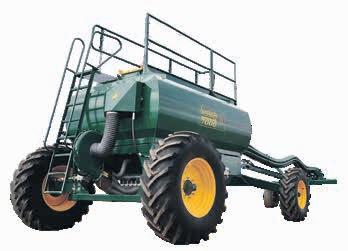



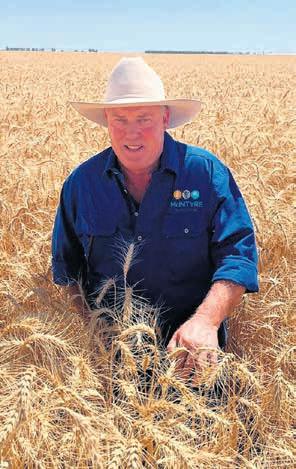
“But at the
putting people first.
“Under his leadership, farmer mental health, wellbeing and safety became key priorities for the NFF.
“This focus led to the creation of a national mental health coalition supported by more than 50 organisations across agriculture, health and rural sectors.”




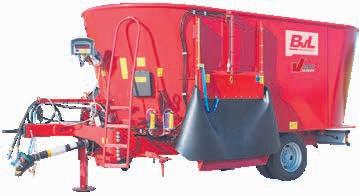



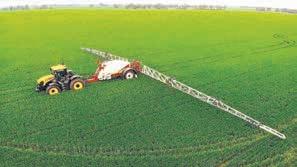




GrainGrowers is seeking nominations from growers interested in serving as representatives for the southern region on its National Policy Group.
Eligible members in Victoria, southern New South Wales, and Tasmania have an opportunity to be part of a group committed to driving national grains industry policy.
The GrainGrowers NPG comprises a total of 15 growers – five from each of the three major grain-growing regions in Australia: Western Region – South
Australia and Western Australia; Southern Region – Southern New South Wales, Victoria and Tasmania; and the Northern Region – northern New South Wales, Queensland and the Northern Territory.
Applications to fill a total of five positions for the southern region are now open, with nominations closing at noon on November 3.
Warracknabeal grain grower Daniel Keam has served on the NPG for the past six years and said he would highly recommend people to nominate and get involved.
“While I have decided to stand down now, I can say that my time on the group has been a rewarding one for me, allowing me to develop knowledge and consider a range of national issues impacting our industry,” he said.
“As a grain grower you are naturally invested in the industry. The NPG is an opportunity to act on this investment, broaden your perspective and contribute your opinion on issues that can make a difference.
“From my experience, I can say I have learned a lot by being involved
in the process, and I would encourage others to step up and actively play their part in the work undertaken by GrainGrowers.”
GrainGrowers chief executive Shona Gawel said elected growers would provide direct input into the formulation of industry policy positions, developed to represent and deliver outcomes on behalf of growers.
“The NPG is a highly motivated group, committed to considering policy issues from a range of perspectives,” she said.
“I would encourage anyone who
would like to actively look at the key issues impacting the industry to consider what they have to offer, nominate and get involved.”
The NPG meets in person three to four times a year, with additional virtual meetings as required.
GrainGrowers covers transport and accommodation costs and provides a sitting fee.
Eligible members can apply via www.graingrowers.com.au/policy/ national-policy-group.
A new large seeded red imidazolinone, IMI, tolerant lentil variety with the highest combination of disease resistance is on show at field days this spring.
Named GIA Colombo, after the capital of Sri Lanka, which is a key market destination for the product, it has been provisionally rated R/MR to ascochyta blight and MRMS to botrytis grey mould.
It makes it a great fit for lentil growers in disease-prone, medium-to-high rainfall regions, with heavier textured soils or for early sowing times.
Grains Innovation Australia’s, GIA, South Australian based breeder Larn McMurray said if growers had concerns about diseases, the variety would give them more confidence in managing their crop, particularly in seasons with a wetter spring.
“But fungicides are still required in crop, but less than for more susceptible varieties, he said.
“Areas where lentil intensity is high and crop rotations tight will also find this variety useful to help minimise ascochyta infections.”
GIA’s Victorian breeder Michael Materne said national variety trial, NVT, data showed the new variety stacked up well against industry benchmarks in a broad range of settings.
“The all-Australia NVT predicted MET yield across 25 trials in 2023 and 2024 showed GIA Colombo to be the highest yielding of all the large and medium sized IMI red lentil varieties,” he said.
“We developed the variety from a PBA Jumbo2 lentil background, and it has a similar plant type and reaction to boron and salinity.
“It also has a moderate to good vegetative frost reaction and mid maturity rating, like PBA Jumbo2 and GIA Thunder.
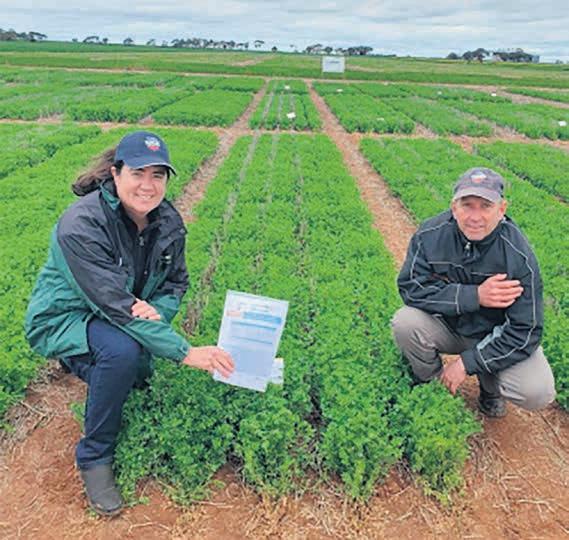
“This makes GIA Colombo well suited to longer and more favourable growing season environments.”
PBSeeds commercial manager at the distributor of the new variety, Janine Sounness, said there would be plenty of seed available for the growers to sow in the 2026 season for growers interested in producing large lentils.
“The large lentil market isn’t as big in volume as the small-size lentil market, but at times large lentils can offer a premium price over small and medium types,” she said.
“GIA Colombo is well suited for the Sri Lankan market with its grey seed coat and seed size a little larger than PBA Kelpie and a little smaller than PBA Jumbo2.”

OʼBrien & Smith Lawyers are pleased to announce they have acquired Derbyshire Legal, a respected institution in Stawell.
As Yvonne Derbyshire steps into a well-earned retirement, O’Brien & Smith Lawyers are excited to continue Derbyshire Legal’s tradition of exceptional legal service. O’Brien & Smith Lawyers extend their heartfelt congratulations and best wishes to Yvonne on her retirement and thank her for her continued trust and support.
The team at OʼBrien and Smith Lawyers look forward to assisting with your legal needs, and are happy to announce that Helen Thomson is back from maternity leave and now accepting appointments.
The team O’Brien & Smith Lawyers will be available to assist you with your legal needs from the same familiar location at 178 Main Street, Stawell from 1 March 2025.
Please note that consultations will be conducted by appointment only to ensure the highest level of service. To arrange your appointment, kindly contact O’Brien Smith Lawyers’ reception by calling 5381 2222 or visit www.obsl.com.au.

Producers should monitor sheep health after the winter’s drought conditions could have compromised their condition and resistance to internal parasites.
BestWool/BestLamb project leader Alison Desmond said short pastures and prolonged grazing close to the ground could increase the risk of worm larvae uptake.
“Although pasture growth in spring typically lowers susceptibility, it remains essential to stay vigilant –particularly at and after weaning when young animals are most vulnerable,” she said.
“Worm infection costs the Australian sheep industry an estimated $436-million per year in lost production.
“Sheep infected with worms exhibit signs such as weight-loss, poor wool growth, scouring, and in severe cases, anaemia or death. The cost of worm infections can be substantial, with losses in growth, wool, and survival, along with treatment expenses.”
Ms Desmond said weaners were the most vulnerable group of animals, as they had the highest susceptibility to internal parasites.
“Their natural immunity, which protects them against worms, doesn’t develop until about 12-18 months of age,” she said.
“Stressors associated with the weaning process can also compromise immunity.”
Ms Desmond said producers could conduct regular worm egg counts, WECs, which provided the best chance of detecting a worm burden and targeting appropriate treatments.
“Regular monitoring through worm tests is crucial,” she said.
“These tests help determine when sheep exceed the WEC threshold, indicating the need for treatment.
“Active monitoring also guides decisions on when not to drench, preventing unnecessary chemical use, saving the cost of treatment and reducing the risk of drench resistance.”
People can visit Agriculture Victoria Feeding Livestock website: Worms – monitor, measure and manage for information on WECs, and for short videos on the impact of worms and management strategies.


SHEARING / BACKLINING
• Wool packs • Bale fasteners
• Brooms
• All accessories
Backlining products to suit all needs

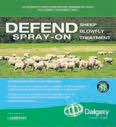
Recent rains could promote a bad fly season. Products to cover all needs available in store!


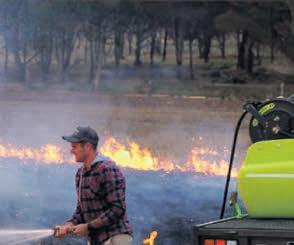



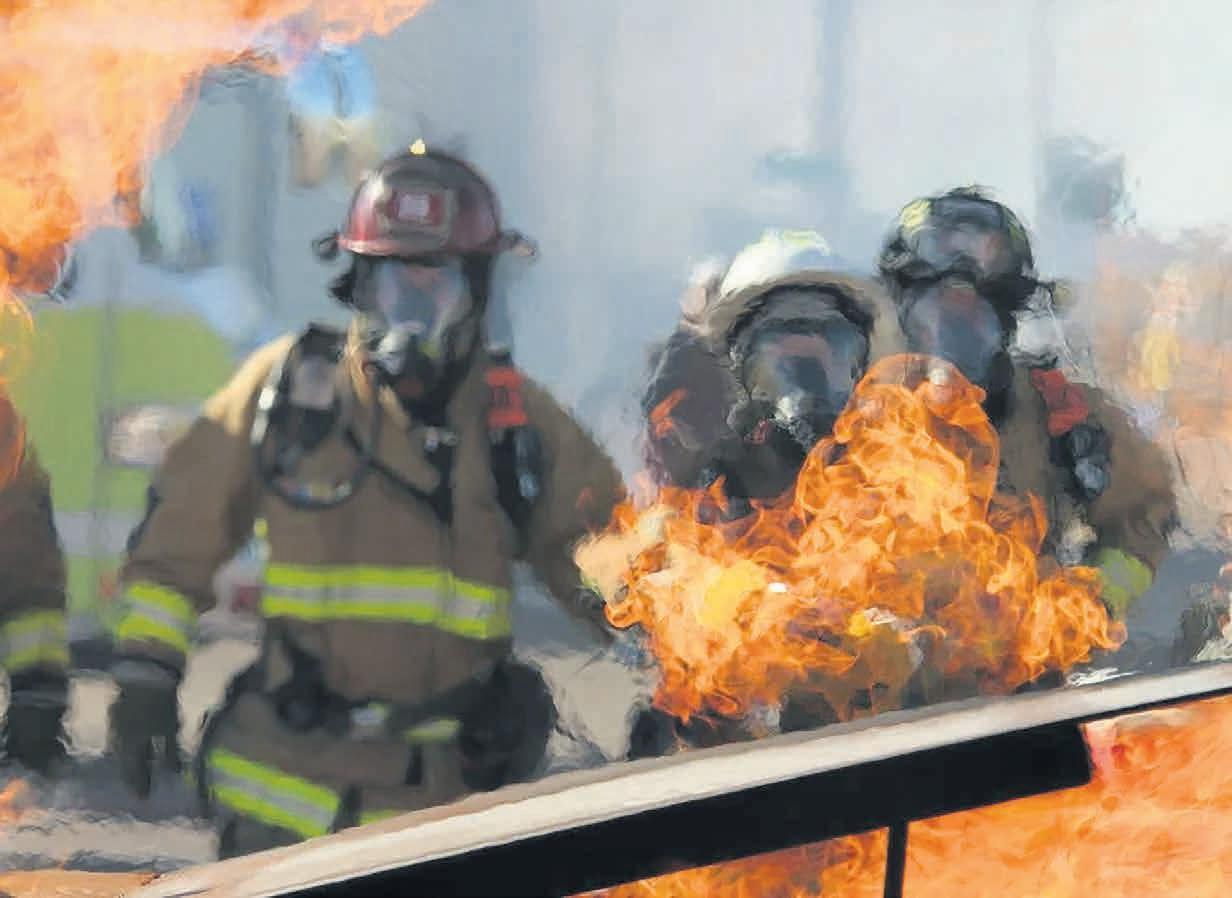
ADVANCED FIRE SUPPRESSION
F-500 EA boosts the firefighting capacity of water by up to 20 times.
20 Litres of F-500 EA concentrate @ 1% in water = 2,000 Litres.
BURNBACK RESISTANCE
Help protect your property in advance of approaching fire by applying F-500 EA to vulnerable assets, fences or to expand your existing fire breaks.
LITHIUM BATTERY FIRES
F-500 EA has been tested and proven for over 15 years as the most effective agent to extinguish lithium battery fires.






Boosting livestock performance, productivity and sustainability through electronic data-tracking will be the focus of a free webinar with sheep data specialist Elise Bowen next month.
Wimmera and Glenelg Hopkins CMAs are hosting a webinar on November 7 from 3pm to 5pm on Sheep Electronic Identification, eID. Victoria introduced electronic identification of sheep and goats in 2017 with significant advances in data-collection and tracking technology since.
The webinar will provide practical steps for farmers who have just started using eID along with more advanced data analysis for producers who have been using the technology for a long time.
Wimmera Sustainable Agriculture facilitator Bronwyn Bant said a high number of farmers had already registered for the webinar.
“This indicates wide interest in how eID can be utilised to farmers’ best advantage,” she said.
Ms Bowen, from Wagga Wagga, specialises in supporting farmers to collect and analyse sheep data to boost efficiency gains and fast-track genetic performance.
“Elise is a trusted expert in sheep production, with years of industry experience helping producers lift

performance through her business, Sheep Data Management,” Ms Bant said.
“Through the data collected, farmers can shorten the length of time it takes to have lambs ‘market ready’ and can often run less sheep to achieve the same amount of live weight.
“If you’re running less sheep, for less time, you’re also emitting less methane.”
The webinar aims to demonstrate the full potential of using eID, with topics of: key benefits of adopting
eID technology; practical tips for effective data management; aligning data collection with strategic farm goals; building a data collection calendar tailored to a business; and turning raw data into actionable insights.
Ms Bant said with so much technology available to farmers, often the biggest challenge was sifting through information to find the most relevant and valuable data for making management decisions.
“You can use eID to track performance through genetics, fertility and

the like, giving you the opportunity to weed out under-performing livestock such as dry ewes, poor mothers, low-weight gainers and sheep with poor fleece,” she said.
“This allows you to increase herd performance and efficiency, and by being able to identify and manage your high-impact animals, you can reduce your emissions on farm.”
People can register and receive a link to attend the webinar via Wimmera CMA’s website wcma.vic.gov. au.

Seppelt Great Western’s 2025 Drumborg Vineyard Riesling has been named Best Wine of Show at this year’s Western Victoria Wine Challenge, and manager Larry Sadler awarded the Kym Ludvigsen Memorial.
Winemaker Clare Dry said the newly released vintage impressed judges with its lifted citrus blossom aromatics, precise mineral profile, and long, elegant finish.
She said the recognition was for a team effort.
“We’re incredibly lucky to work with fruit from the Drumborg Vineyard in south-west Victoria,” she said.
“It’s a special site that produces fruit of such finesse and tension, and Larry and the team do a phenomenal job year after year.
“This wine is a real team effort, and we’re thrilled to see it recognised and Drumborg Vineyard manager Larry Sadler, who was awarded the Kym Ludvigsen Memorial Award for Best Single Vineyard Wine of Show at this year’s challenge.
“It was an emotional honour for Larry, as the award commemorates the late Kym Ludvigsen, who was a highly respected figure in Victorian viticulture and a close friend.”
The Western Victoria Wine Challenge celebrates the depth and diversity of wines produced across the Grampians, Henty and Pyrenees regions.
Judged blind by a panel of experienced wine professionals, the event showcases both emerging styles and the benchmark wines that continue to shape Western Victoria’s reputation as a cool-climate powerhouse.
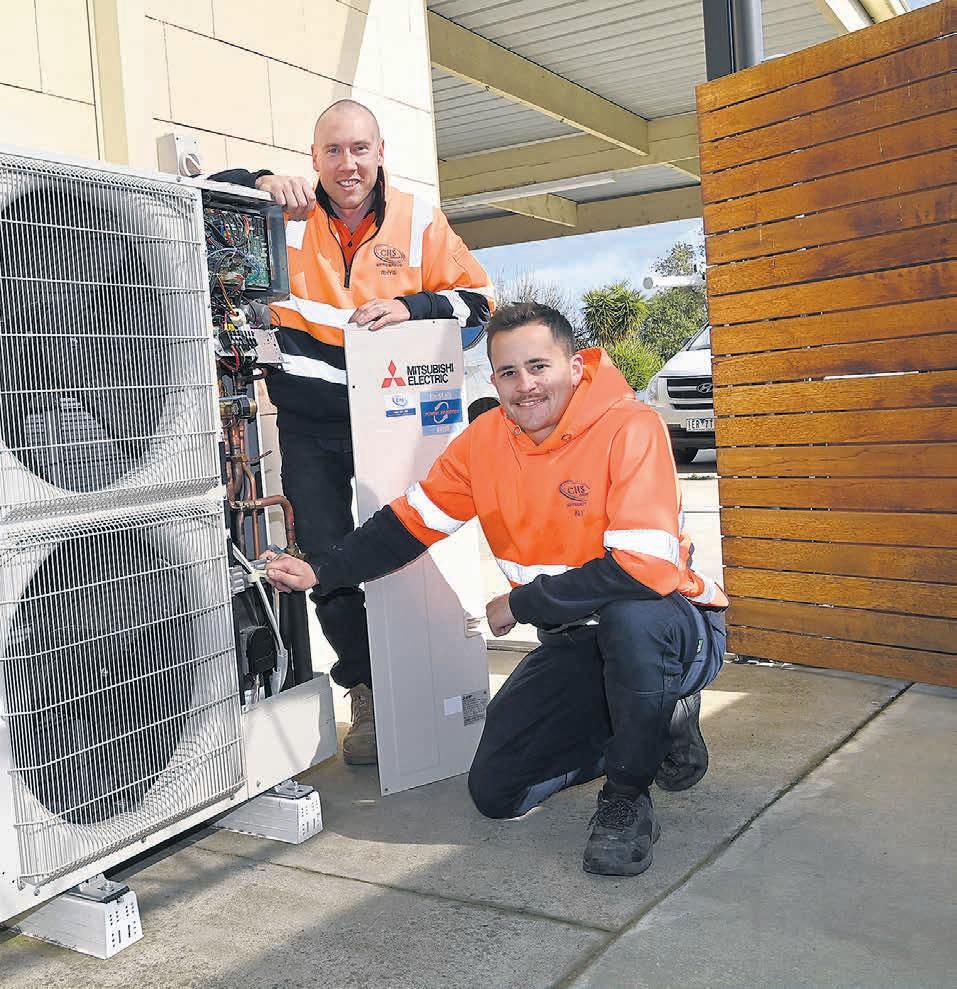




BCG is bringing local voices to the screen with an eight-part docuseries Over the Fence, celebrating the resilience and ingenuity of farming communities across north-west Victoria.
The series shifts the focus from drought as a crisis to drought as an opportunity for learning, preparation and connection.
By capturing the lived experiences of farmers, advisors, local business owners, sporting clubs, contractors and community members, Over the Fence will shine a light on the strategies and stories that help people endure dry times, and move through them with confidence and hope.
BCG chief executive Fiona Best said the series was about recognising and valuing the knowledge already within the region’s communities.
“Too often drought is only spoken about when people are already in the middle of it. This project is about changing that conversation,” she said.
“Over the Fence encourages us to think ahead, to talk openly about risk management and wellbeing, and to see the strengths we already have.
“Our communities are collaborative, resourceful and connected. We want to capture and celebrate that.”
The docuseries builds on the success of BCG’s Over the Fence maga-
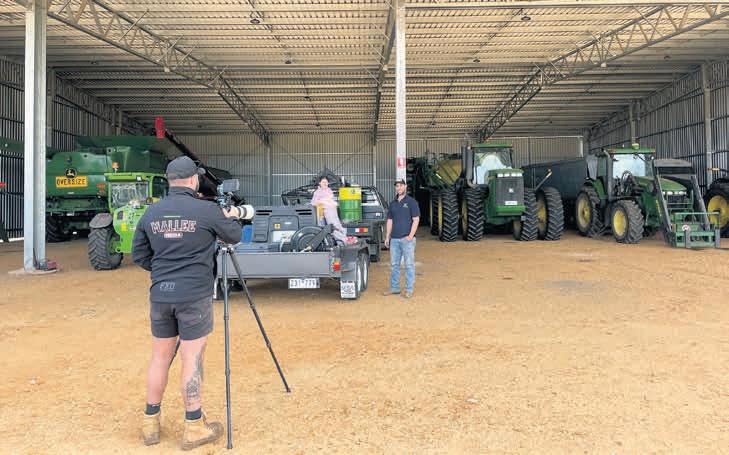
zine published in 2023, which featured 33 farming families and received overwhelmingly positive feedback.
The magazine sparked conversations, prompted reflection and offered a hopeful outlook in contrast to the deficit-focused portrayal of drought.
“The third iteration of Over the Fence reimagines the concept for a
wider audience,” Ms Best said. “By sharing authentic, local stories on film, we can highlight resilience in many forms, from financial planning to community connection, from the role of technology to the importance of wellbeing.
“Too often drought is only spoken about when people are already in the middle of it. This project is about changing that conversation. Over the Fence encourages us to think ahead, to talk openly about risk management and wellbeing, and to see the strengths we already have”
– Fiona Best
munity leaders, we’re able to showcase the bigger picture of how small towns band together in tough times,” she said.
Filming is taking place between September and November this year, with a dedicated launch event planned for early 2026.
The series will be made in partnership with local production company Mallee Media and released across BCG and the Federal Governments Future Drought Fund Victoria Drought Resilience Adoption and Innovation Hub platforms.
BCG extension officer and project leader Alicia Gault said she was proud to be uplifting the voices of local people.
“By shining a light on inspiring stories across the community, from farmers to business owners and com-
“These stories are inspiring, practical, and they remind us that resilience doesn’t start with rain, it starts with people.”
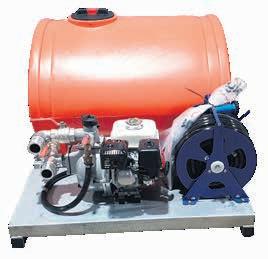
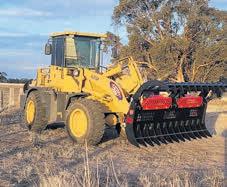

“This project is about lifting each other up,” Ms Best said.
“By listening to one another and sharing what we’ve learned, we can strengthen our communities, inspire action, and be ready for whatever the future brings.”

